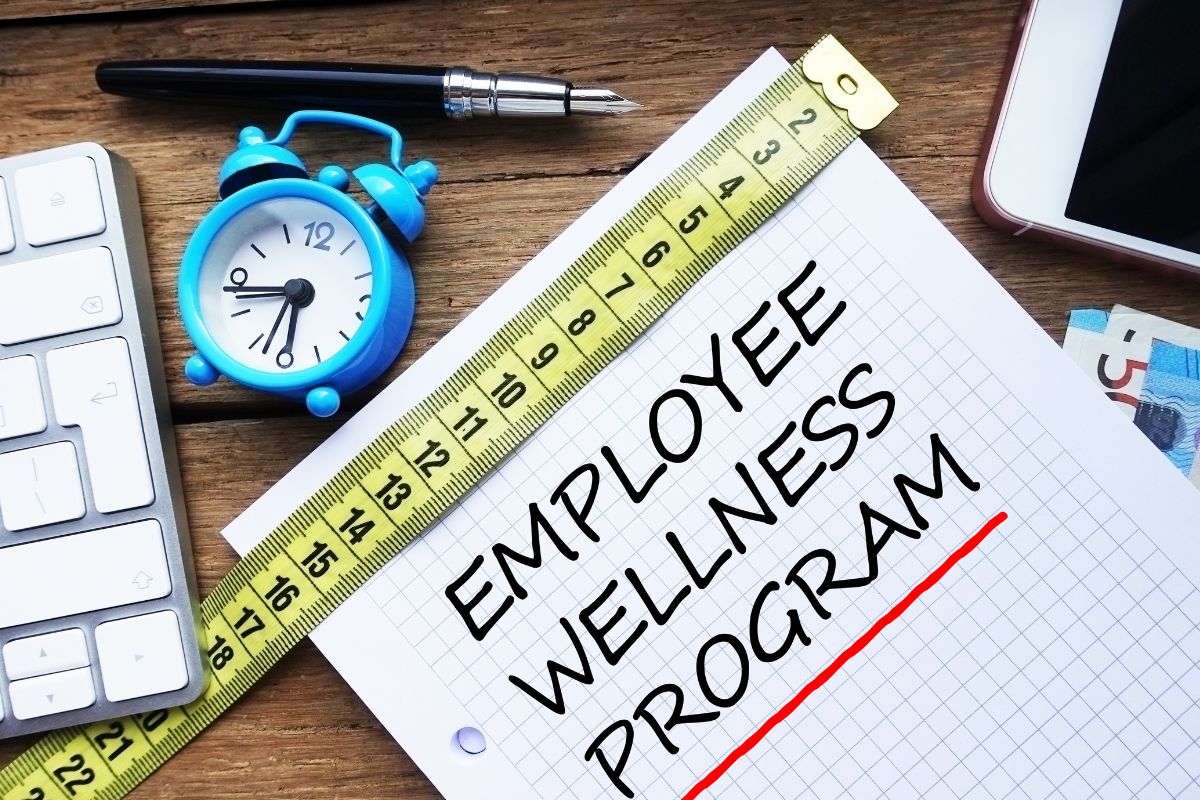Employee engagement remains a pivotal factor for organizations aiming to foster a positive company culture and drive performance at the start of a new year. After the holiday season, January presents a prime opportunity for you to rejuvenate your team and promote a collaborative and motivated work environment. It’s essential for you to recognize the importance of connecting with your employees on both a professional and emotional level to enhance their commitment to your company’s goals.
Creating strategies for employee engagement in January can set a positive tone for the rest of the year. You should explore avenues for engaging your staff that range from recognizing their past year’s accomplishments to providing a platform for them to voice new ideas and concerns. Actively listening and responding to employee feedback demonstrates that their contributions are valued, which is crucial for maintaining a sense of inclusion and worth within your organization.
Implement practical initiatives that encourage your employees to start the year with a renewed sense of purpose and drive. Consider integrating meaningfulness and safety into everyday operations, which, as research suggests, are fundamental in nurturing an environment where your employees feel secure to share and innovate. By doing so, you create a dynamic work atmosphere where your employees are more likely to be actively involved and contribute to the company’s success.
Understanding Employee Engagement
When looking to boost your team’s performance in January or any time of year, a solid grasp of employee engagement is key. Not only is it fundamental in fostering a positive work culture, but it directly influences productivity. Let’s explore exactly what it is, its effect on your workplace, and how you can assess it effectively.
Defining Employee Engagement
Employee engagement is the emotional commitment and connection your team members feel towards your company and its goals. It reflects in their willingness to go beyond the call of duty and their overall attitude and behavior in the workplace. A clear understanding of employee engagement within an organization serves as a cornerstone for strategies to enhance it.
The Impact of Engagement on Productivity
You must recognize that there’s a direct correlation between how engaged your employees feel and their productivity levels. Engaged employees often bring heightened enthusiasm, leading to not only more work being done but of a higher quality too. They are motivated to contribute to success, which can significantly boost the culture of continuous improvement within your company.
Assessing Current Engagement Levels
To effectively enhance engagement, you first need to assess where you currently stand. Conducting a survey is a practical step to gauge the mood and feedback within your team. Anonymity ensures honest and constructive employee feedback, providing you with actionable insights. Here’s a simplified structure to follow for your survey:
- Engagement Items: Ask about alignment with company values, willingness to recommend the company as a great place to work, etc.
- Open-Ended Questions: Allow employees to express concerns or share positive experiences.
- Frequency and Trends: Regularly conduct surveys to track changes and identify trends over time.
By paying close attention to employee feedback, you are better positioned to create a strong action plan that addresses any areas of concern and builds on the existing strengths of your team’s engagement. Keep these observations in mind, and you’re well on your way to fostering a thriving environment where each team member is empowered to perform their best.
Fostering a Positive Work Environment

Creating a positive work environment is critical to fostering employee engagement and productivity. A transparent culture, attention to work-life balance, and a focus on inclusivity can establish a foundation for long-term success.
Creating a Culture of Transparency
To foster transparency in your work environment, start by implementing open channels of communication. Encourage managers to share company goals and performance data regularly. You might consider monthly meetings where teams review successes and areas for improvement, bolstered by a policy of open-door communication that allows employees to voice concerns and suggestions.
Promoting Work-Life Balance
Work-life balance is essential to prevent burnout and maintain engagement. Institute flexible work hours where possible, and endorse the importance of vacations and breaks. Provide resources such as time management workshops to help your employees maximize productivity while also enjoying their personal time.
Building Inclusivity and Mitigating Racism
An inclusive work culture is one that actively works to mitigate racism and promote diversity. This can be achieved through regular diversity training programs and by creating forums for minority groups to express their concerns. Develop a company policy that not only defines unacceptable behavior but also outlines clear consequences for discriminatory actions. Engage diverse hiring panels when recruiting to help counter unconscious biases and build a workforce that reflects a wide range of perspectives.
Engagement Development Strategies

Effective engagement development strategies elevate January’s workplace atmosphere by aligning with personal interests, providing growth opportunities through coaching, and fostering a culture of ownership and recognition. Let’s dive into specific strategies that can be easily implemented.
Tailoring Activities to Diverse Interests
To ensure that your employee engagement activities resonate with your entire team, consider a wide array of interests. Begin by surveying your employees to gather information on their hobbies and passions. This insight allows you to design activities that are more likely to engage everyone. For instance, a book club for the avid readers, coding challenges for tech enthusiasts, or fitness competitions for the health-conscious.
- Survey Topics:
- Hobbies & Passions
- Preferred Social Events
- Learning & Development Interests
Implementing Continuous Coaching and Mentoring
Continuous coaching and mentoring are key factors in maintaining high levels of employee engagement. Implement a mentoring program that pairs less experienced employees with seasoned professionals. This not only promotes knowledge sharing but also fosters meaningful connections within your team. Additionally, providing regular coaching sessions helps employees set clear goals and stay motivated.
- Mentoring Program Structure:
- Pairing Criteria
- Meeting Frequency
- Feedback Mechanisms
Cultivating Ownership and Recognition
Empower your employees by giving them ownership of their projects, accompanied by clear expectations and support. Ownership instills a sense of pride and accountability. To complement this, implement a recognition program that highlights individual and team achievements. Public recognition, whether through an announcement or a ‘Wall of Fame’, validates hard work and can greatly boost morale.
- Ownership Strategies:
- Goal Setting
- Autonomy with Support
- Recognition Ideas:
- Employee of the Month
- Highlight Achievements in Company Communications
Team Collaboration and Bonding

In January, your focus on employee engagement can set a positive tone for the year. Emphasizing team collaboration and bonding through specific activities and events can foster a sense of community and shared purpose.
Enhancing Team-Building Through Events
To boost team cohesion, consider hosting team-building events that challenge and engage your employees. Activities such as escape rooms, scavenger hunts, or workshops can help break down barriers and encourage collaboration. You can find examples and ideas to structure these events in a way that suits your team at team-building sessions.
Connecting Remote Teams
For your remote team, virtual team-building exercises are essential. Regular virtual coffee breaks or book clubs can keep the team connected on a personal level. Online games and activities can also be both fun and beneficial for team bonding. Supporting the bonds within remote teams ensures no one feels isolated and can lead to a more cohesive unit.
Celebrating Achievements and Milestones
Recognition of both achievements and personal milestones is key to maintaining high morale. Whether it’s celebrating a project milestone or an employee’s personal achievement, acknowledging these moments brings the team together. Consider creating a virtual “Wall of Fame” where such moments are highlighted and celebrated, contributing positively to the team’s spirit and engagement.
Wellness and Retention Initiatives

Improving employee well-being and retention requires deliberate actions—especially in January when the drive for new initiatives is strong. You can boost morale and loyalty through targeted wellness activities, comprehensive assistance programs, and by closely examining your retention metrics.
Engaging in Wellness Activities
You play a crucial role in fostering a culture of health within your organization. Start by launching interactive wellness programs that cater to physical, mental, and emotional health. This can include fitness challenges, meditation sessions, and nutritional workshops. Programs like Well-being Champion Impact have shown that ongoing communication and recognition are key in driving participation and engagement in wellness activities.
Creating a Robust Employee Assistance Program
Employee Assistance Programs (EAPs) are vital for supporting your workforce’s diverse needs. Ensure your EAP provides confidential counseling services, financial planning assistance, and legal advice. These programs act as a safety net, promoting overall well-being, which is instrumental in employee engagement and retention.
Assessing Turnover and Retention Metrics
Understanding why employees stay or leave is critical for developing effective retention strategies. Regularly review and assess turnover metrics to identify patterns and areas for improvement. Consider conducting exit and stay interviews to gather candid feedback. This data can inform your approach to increasing satisfaction and engagement, thus bolstering your retention efforts.
Tangible Rewards and Organizational Support
Providing tangible rewards and robust organizational support enhances your workplace environment by boosting employee recognition and fostering professional growth. Thoughtful rewards and recognition not only acknowledge hard work but also reinforce your commitment to employee career development.
Offering Meaningful Rewards and Recognition
When you offer meaningful rewards and recognition, you directly address your team members’ intrinsic need for appreciation. Here are some specific actions you can take:
- Celebrate Milestones: Acknowledge significant employee achievements, such as project completions or work anniversaries, with personalized rewards.
- Performance Bonuses: Implement a transparent bonus system based on measurable outcomes, making sure to clearly communicate how bonuses are earned.
Each form of recognition should reflect the contributions and individuality of the recipient, ensuring that they feel genuinely valued.
Supporting Professional Growth and Career Development
Supporting career development is about more than just annual reviews. It involves continuous efforts to help individuals advance their skills and careers:
- Tailored Training Programs: Offer access to courses and workshops that align with both the employee’s and organization’s goals.
- Mentorship Opportunities: Pair employees with mentors who can provide guidance, insight, and support on their professional journey.
By investing in your employees’ professional growth, you demonstrate a long-term commitment to their success within the organization.
Special Events and Traditions

In January, capture the momentum of a New Year to foster team spirit and enhance employee engagement through meticulously planned special events and observances of significant traditions.
Planning New Year Celebrations
New Year Celebrations: Start the year on a high note by organizing a memorable celebration of the Gregorian calendar’s commencement. Encourage your team to set professional resolutions as personal goals align with organizational objectives. Consider a themed office party where employees share their hopes for the year or a workshop to strategize personal growth and productivity.
Observing Notable January Days
- Civil Rights Day and Martin Luther King Jr. Day: These days are a chance to honor Dr. King’s legacy and promote diversity within your workplace. Plan seminars or activities that highlight the importance of equality and civil rights.
- Clean Off Your Desk Day: Encourage employees to declutter their workspace, promoting efficiency and a fresh mental space for the year ahead. You might offer organization supplies or incentives for the cleanest desk.
- Coffee Day: Use this day to appreciate the simple pleasure of coffee that many enjoy and rely upon. Perhaps introduce a coffee-tasting event or showcase different brewing methods to cultivate a shared experience.
Organizing Company-wide Volunteering
Volunteering: Cultivate a culture of giving back by organizing company-wide volunteering initiatives. Research local charities or environmental groups where your team can contribute their time. This demonstrates company values and allows employees to bond over making a positive impact in the community.
Innovative Engagement Ideas
In January, invigorate your team with fresh and creative approaches to engagement that leverage collective intelligence and foster personal development. Here’s how you can implement them effectively.
Facilitating Brainstorming and Innovation Sessions
Engagement thrives in an environment where your ideas can flourish. Organize sessions focused on brainstorming and innovation to encourage employees to contribute to the company’s creative process. Sessions should have clear objectives and be facilitated by someone experienced in guiding such discussions to ensure productivity. The involvement of various departments can lead to diverse perspectives and richer ideas.
Instituting Learning and Skill-Building Workshops
Building skills is a cornerstone of employee engagement. Offer workshops that allow your team to learn and grow in their roles. These can range from technical skill enhancements to leadership training, directly impacting their capacity to innovate and adapt. Continuous learning environments also increase your team’s value, which in turn drives employee engagement.
Hosting Cooking Classes and Coffee Tastings
Break away from routine with culinary experiences like cooking classes and coffee tastings. These activities can ignite creativity and offer a relaxed setting for informal idea exchanges. Not only do they serve as a novel way to engage, but they also give a platform for employees from different areas to collaborate, leading to a stronger sense of community and teamwork.
Ongoing Feedback and Improvement
Ongoing feedback and improvement are essential for fostering a workplace environment where employee engagement and satisfaction thrive. By prioritizing these areas, you can address and implement relevant resolutions that directly impact job fulfillment.
Incorporating Employee Feedback Mechanisms
To start, ensure you have efficient systems in place that encourage your employees to share their feedback regularly. Implement regular surveys or feedback sessions that provide anonymity and safety for honest communication. Data gathered from these mechanisms can offer valuable insights into areas needing improvement, enhancing job satisfaction.
- Monthly Surveys: Conduct these to gauge ongoing concerns or applause points.
- Suggestion Boxes: Physical or digital, allow for spontaneous feedback.
- Quarterly Feedback Meetings: Facilitate face-to-face discussions to resolve complex issues.
Establishing Best Practices for Engagement
Best practices are the cornerstone of elevating employee satisfaction. Here’s how to establish them:
- Clearly communicate your organization’s mission and values, aligning employees with the company’s goals.
- Recognize and reward contributions, ensuring that employees feel valued for their efforts.
- Provide career development opportunities to show your investment in their professional growth.
By embracing these practices, you can sculpt a culture of continuous engagement where employee input is not just heard but acted upon.
Frequently Asked Questions
In this section, you’ll find targeted suggestions and strategies to revitalize your team’s energy and engagement, especially during the post-holiday January lull.
What are innovative team-building activities to boost staff morale?
Consider interactive and collaborative activities like escape room challenges or workplace hackathons. These can spark creativity and foster problem-solving skills among team members.
How can we implement a year-round employee engagement calendar?
Start by mapping out key company dates and align them with seasonal themes or relevant observances. Regularly scheduled events, feedback sessions, and personal development opportunities can be integrated throughout the year. For additional guidance, you might find this resource helpful: Employee engagement.
What are the most effective examples of employee engagement initiatives?
One-on-one mentorship programs, recognition awards, and wellness activities are among the most impactful. Providing opportunities for professional growth also demonstrates investment in your team’s success.
How do we organize fun, yet productive, office games to enhance team cohesion?
Choose games that require team strategy, such as trivia contests or building challenges, which are not only enjoyable but also illustrate the value of teamwork and communication.
What strategies can be used to increase employee engagement in manufacturing settings?
Emphasize transparent communication and provide regular feedback. Also, consider safety competitions and efficiency challenges to engage employees in a meaningful way.
What comprises the 5 C’s of employee engagement and how can they be applied?
The 5 C’s are Connect, Career, Clarity, Convey, and Congratulate. Apply them by developing strong relationships, offering clear career paths, setting transparent goals, providing continuous feedback, and celebrating successes.



